Human Dimensions
The solutions to shorebird threats are rooted in collaborations with local communities.
We have a toolkit to help partners select, design, implement, and evaluate strategies for the human dimension challenges of shorebird conservation at sites throughout the Americas.
Planning a human dimensions program:
Understanding the human dimensions of wildlife conservation—how people’s behaviors, knowledge, and values affect or are affected by conservation decisions—is a critical part of implementing habitat management for shorebirds. A carefully designed approach is essential in successfully engaging people and meeting the needs of both shorebirds and human communities.
First, identify the threat and define the audiences. Next, develop strategies to target these audiences. Finally, implementation can begin – starting small, and evaluating as you go. Community engagement programs should include social research for audience segmentation, identification of the barriers to change, and the motivators for change to ensure that you develop an effective program with measurable outcomes.
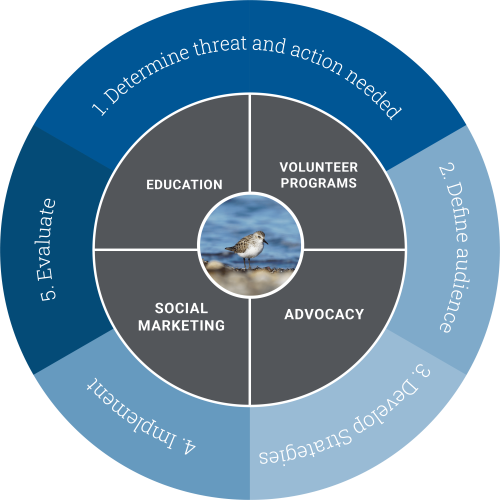
Four Community Engagement Strategies:
When should communities be engaged? And how should they be engaged? The WHSRN Executive Office recommends four main strategies for strategic community engagement.
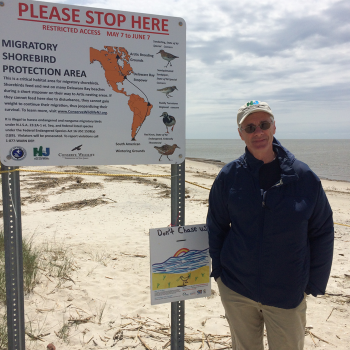

Social Marketing for Behavior Change
Social marketing uses traditional marketing techniques to motivate behavior change for social good.
When to choose Social Marketing: When the threat is directly related to human activity and a behavior change is needed to resolve the threat.

Volunteer programs for support of conservation actions
Volunteer-based stewardship and citizen science programs provide passionate people with an opportunity to take action with support of restoration and monitoring projects.
When to choose Volunteer Programs: When you need to build a constituency of supporters and the site has management activities or monitoring with predictable timing and easy-to-learn protocol.
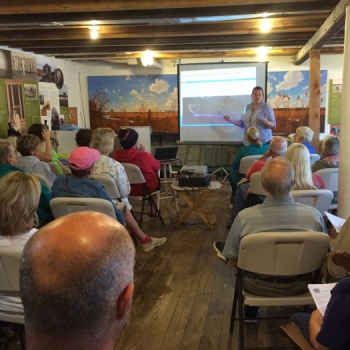
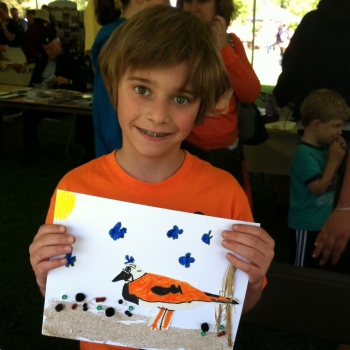

Education to build a broader base of supporters.
Environmental education can increase someone’s knowledge of an issue, and if they are not firm in the beliefs or values it can shift their opinion or behavior.
When to Choose Education: When your community has low awareness of your site and shorebirds and you need to build a constituency of people

Advocacy to engage this base of supporters in the decision-making process.
Advocacy provides the opportunity for communities to have their voice heard when policy and regulation become necessary to move conservation forward.
When to choose Advocacy: If you have a management authority that needs to hear from stakeholders on a policy decision. A supportive constituency will use their voices to advocate for your conservation efforts.
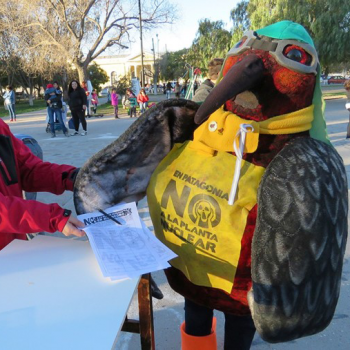
Working Together
Your site may only need one community engagement strategy for one audience. But most likely your community engagement program will combine several of these engagement strategies. Each type can reach different audiences and address different aspects of the threat you are focusing on. They may share messages, tools, or materials, building on each other. In this way, education can lead to stewardship and citizen science, which can lead to advocacy.
Social Marketing
Motivate behavior change.
Volunteer Programs
Build your base with a stronger connection to the site and the birds.
Education
Reach new audiences; increase knowledge.
Advocacy
Utilize your base to achieve management actions.
Site Support
The WHSRN Executive Office has compiled recommendations and tools to help site partners select, design, implement, and evaluate strategies for human dimensions challenges of shorebird conservation.
To assist with the development of your program, a user-friendly toolkit was created to provide step-by-step process to quickly, efficiently, and effectively develop a program with social science tools. The toolkit also includes evidence-based templates, resources and planning worksheets.
For more information about Community Engagement, contact Vianey Ramirez, Communications and Community Engagement Specialist.
Cover Photo: Jim Sayce.
Page photos top to bottom: Laura Chamberlin (x4), Diego Luna Quevedo.




